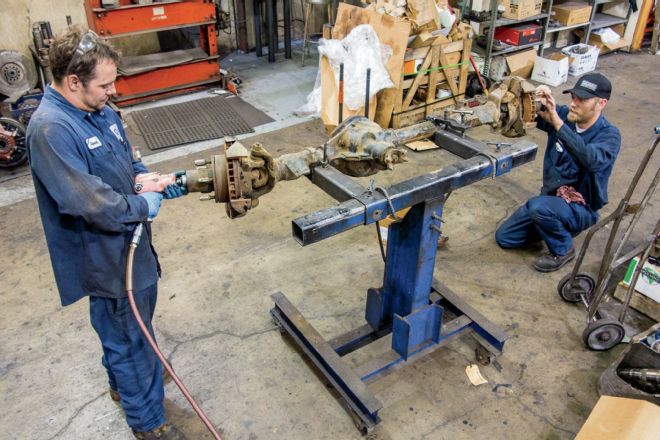
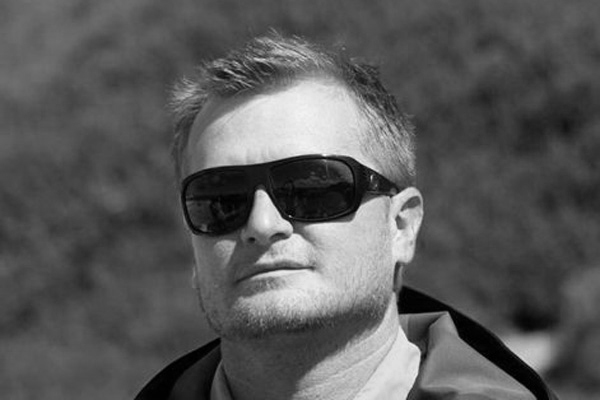 Harry Wagner
Contributor
Harry Wagner
Contributor
“What’s in a name? That which we call a rose by any other name would smell as sweet.” – Juliet Capulet
Quoting Shakespeare in Four Wheeler ?! Keep reading, and we promise that it will all make sense. You see, the Dana 44 is the “rose” of the 4x4 world. On the surface it seems like a fairly specific name, but there are nearly as many Dana 44 variations as there are types of flowers in the world. Front or rear axle? High pinion or low pinion? Independent or solid axle? And then you add in the new JK Dana 44 axles that have zero parts compatibility with older Dana 44s and things start to really get confusing.
Revolution has parts for every Dana 44 imaginable.
Thankfully, the folks at Revolution Gear and Axle and Bayshore Truck helped shed some light on the differences between various Dana 44s. We sourced chromoly axleshafts, a 5.38 ring-and-pinion, and master installation kit from Revolution for the high-pinion Ford Dana 44 axle we were building, but they have parts for every Dana 44 imaginable. Then we headed to Bayshore Truck, where shop manager Aaron Lechner walked us through the installation. Lechner can rattle off part numbers with ease and, near as we can tell, has never muttered the words “Year, make, model?” to a customer in his entire life.
Now if we could just get Lechner to explain Shakespeare’s iambic pentameter…
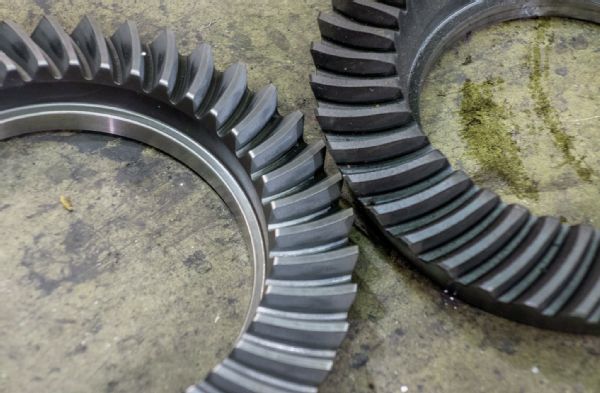
Dana 44 front axles have either standard or reverse-cut gears. In the off-road vernacular, we refer to them simply as low- or high-pinion, respectively. Designed initially for rear-drive applications, the standard-rotation (or low-pinion) axles run backwards when used in a front axle application. That puts the power on the coast side of the teeth, which is weaker than the drive-side. All GM, Dodge, and International Dana 44 front axles were low-pinion design up through the ’80s; however, Ford and Jeep used both low- and high-pinion front axles. The advantage to a high-pinion axle in a front application is the gears mesh on the drive-side of the ring gear, not the coast side. The pinion entering the housing above the centerline also helps protect the driveline from damage in the rocks.
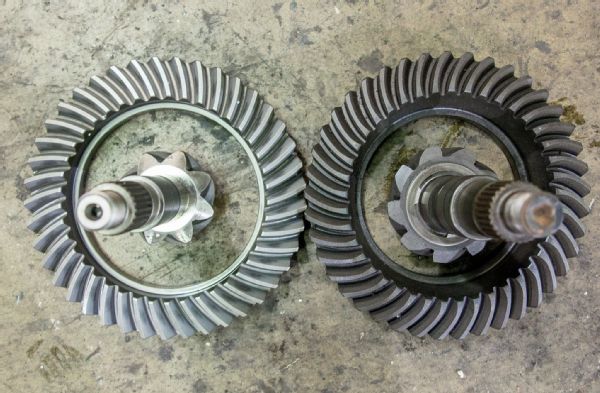
A traditional Dana 44 axle uses an 8.5-inch ring gear. However, JK Wrangler rear axles use an 8.8-inch ring gear with a Dana 60-sized pinion shaft. The JK axle is still referred to as a Dana 44, but neither the differential nor the ring-and-pinion are compatible with older Dana 44s.
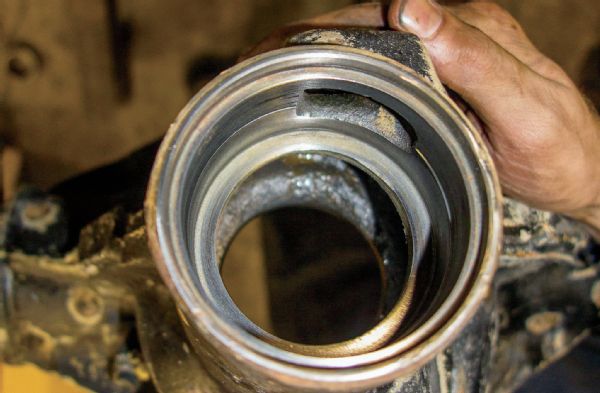
The high-pinion Dana 44 has oiling passages in the housing and a slinger on the pinion in order to lubricate the pinion bearings, since they are not immersed in oil like a low-pinion axle design. Note that we thoroughly cleaned the entire housing before beginning our installation.
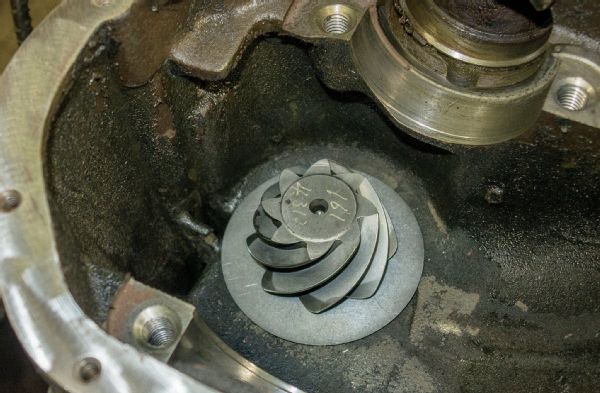
Like most kits on the market, a new oil slinger was not included with the Revolution Gear master installation kit, but it is available separately. Aaron Lechner of Bayshore Truck measured the thickness of the slinger and used a shim of the same thickness during setup. The larger diameter slinger can become damaged when installing and removing bearings, so it was not added until the final pinion depth was determined.
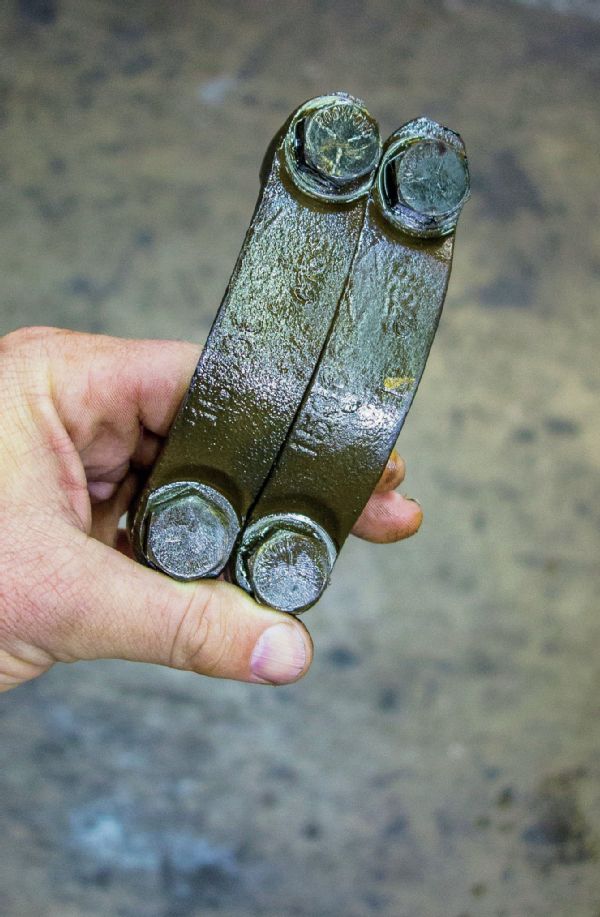
Before removing the differential from the case, it is important to mark the bearing caps to ensure that they are reinstalled in the same orientation. This is true for all axles, even when using new bearings, since the caps are machined when they are installed on the axle.
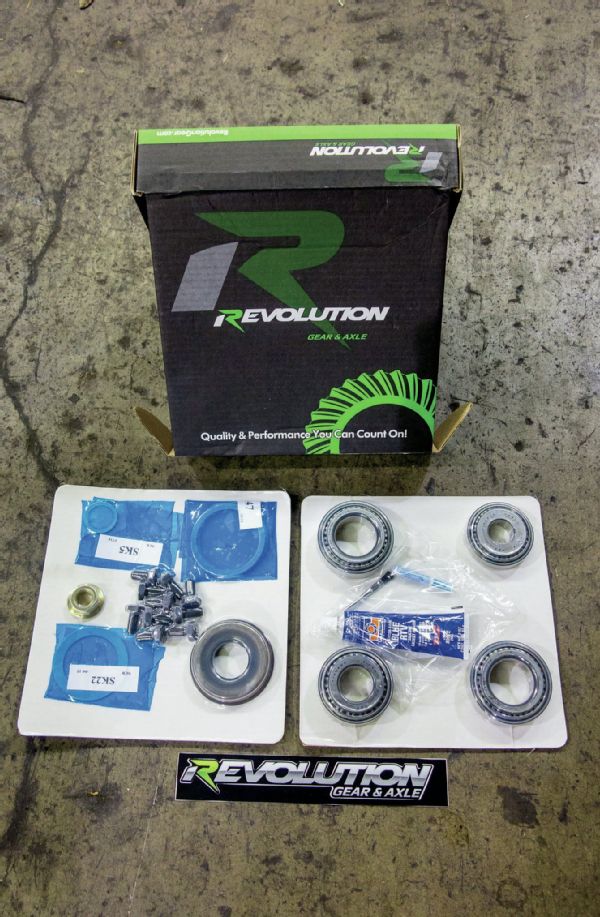
Revolution has a full line of ring-and-pinions and master installation kits for most popular axles, including Dana 30, 44, and 60, Ford 9-inch, Toyota, and more. The installation kits include quality Timken bearings, new shims, ring gear bolts, pinion nut, and marking compound.
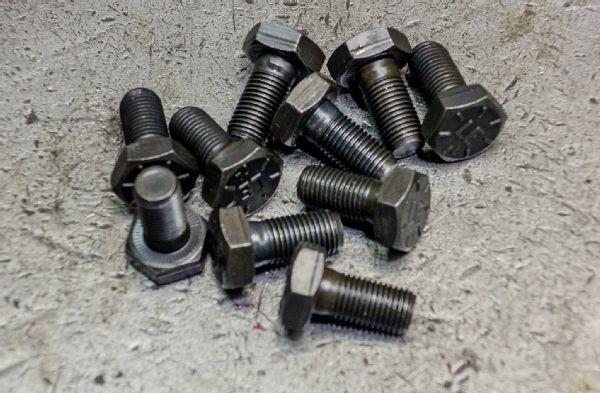
Like U-bolts on leaf springs, the ring gear bolts should always be replaced when working with a differential. Most Dana 44s use 3⁄8-inch ring gear bolts, but JKs use 7⁄16-inch bolts. Ensure that you have the correct parts before you begin your installation.
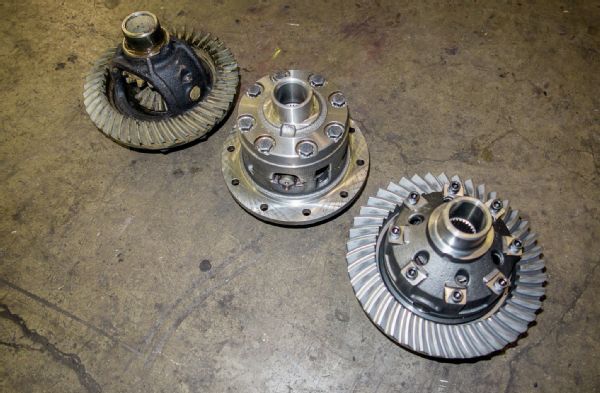
From left to right are our old open carrier, a Power-Lok limited-slip differential, and the Eaton Detroit Locker that we installed in our Dana 44. Note that two different carriers are available to ensure proper distance between the ring gear and pinion. The “carrier break” occurs between 3.73 and 3.92 for the Dana 44, so plan ahead before purchasing differentials if you think you may want to change ratios in the future.
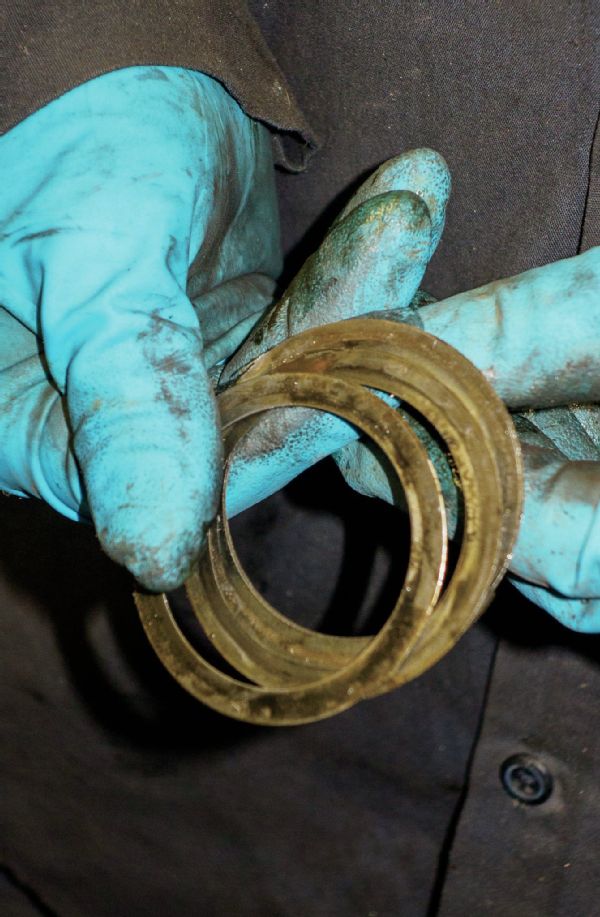
It is easier to start with a complete differential than a bare housing, since you can measure the old shims and use their thickness on each side of the differential as a starting point for gear setup. We just used a pry bar and no case spreader when setting up the differential, but Lechner said that he does use a case spreader when installing ARB Air Lockers to ensure that the engagement ring is not damaged.
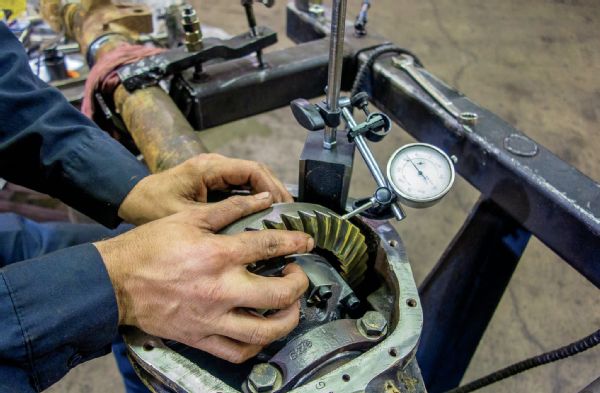
Lechner enlarged the inner diameter of the old bearings that were in the housing with a die grinder to use them as setup bearings. This made it easier to get the differential in and out of the housing and swap shims until the backlash was between 0.012 and 0.015 inches.
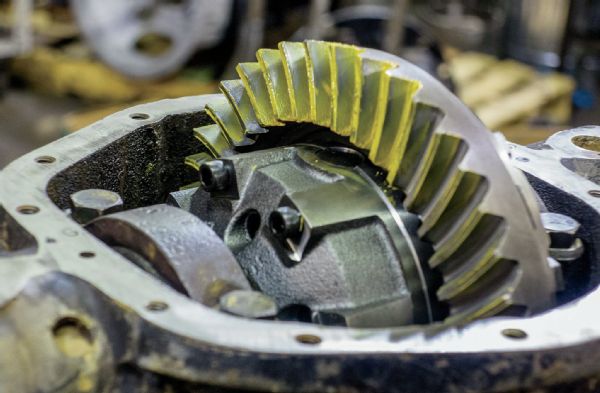
Pinion depth determines how deep (root) or shallow (top) the pinion teeth land within the ring gear. Backlash determines how far up (tow) or down (root) the pinion lands on the ring gear. Both must be correct in order for your new gear set to run cool and quiet for years to come.
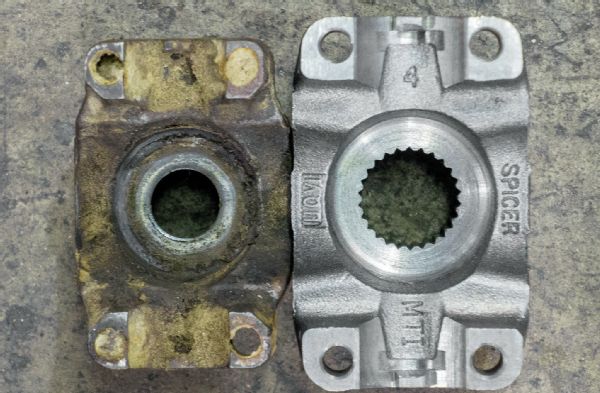
A variety of different yokes are available for Dana 44s, including flanges and yokes that accept straps or U-bolts. We upgraded our yoke to a genuine Spicer unit that accepts a 1330 U-joint that is retained with U-bolts.
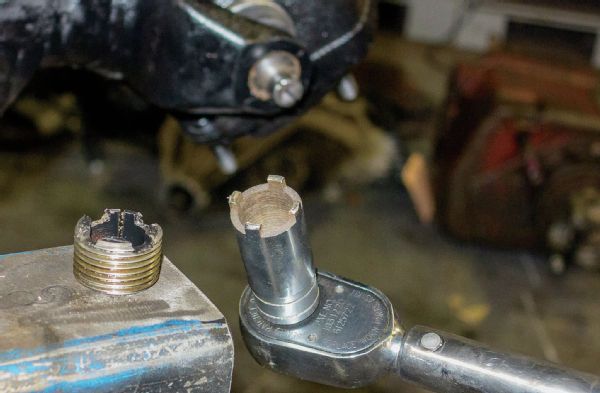
The upper ball joint is on the left and accepts a cotter pin, while the lower ball joint on the right has a larger shank. Ball joints are not the place to try and save a buck. Installation is labor intensive, so it pays to do it right the first time. We have had very good luck with Spicer ball joints, but Moog and Synergy Manufacturing are other high-quality options.

This special socket is required to set the proper torque on the ball joint sleeves. Note that offset ball joint sleeves, which are useful for adding caster after a suspension lift is installed, cannot be properly torqued since they must be installed in particular orientation to add caster.
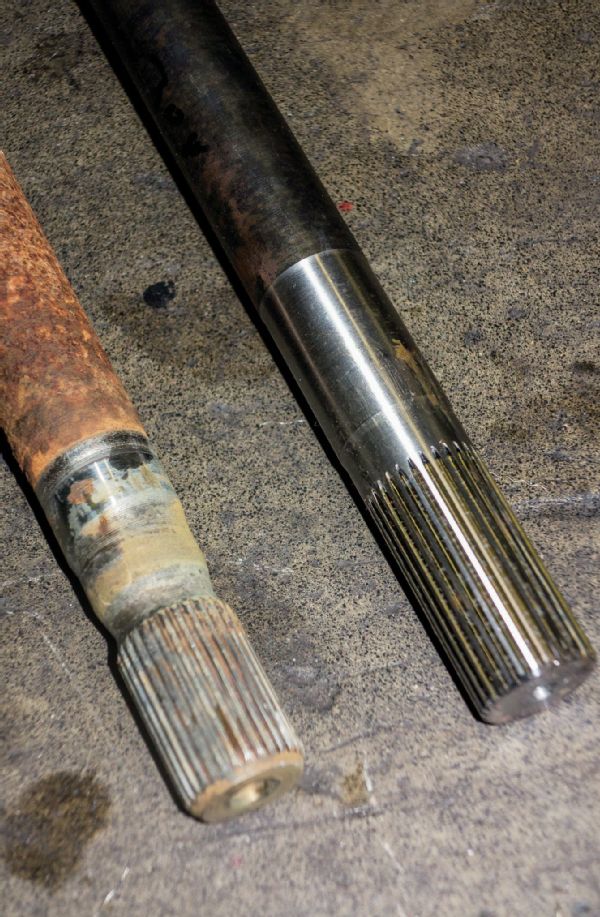
Note how the factory axleshafts taper down after the splines, while the Revolution axleshafts keep a consistent diameter all the way through to eliminate any weak links. The Revolution axleshafts are also constructed from American-sourced 4340 chromoly alloy for even greater strength. Most factory Dana 44 front axles use 30-spline carriers and inner axleshafts with 19-spline stub shafts from the factory.
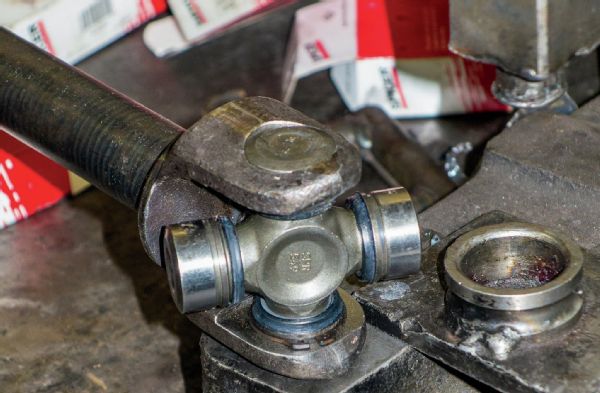
We fitted our Revolution axleshafts with Spicer 760X non-greasable U-joints. The debate about greasable or non-greasable is as heated as Ford versus Chevy, but in our experience, the non-greasable joints are slightly stronger and have better seals. For even greater strength, there are U-joints on the market made from 300M that eliminate the needle bearings to allow for larger trunions.
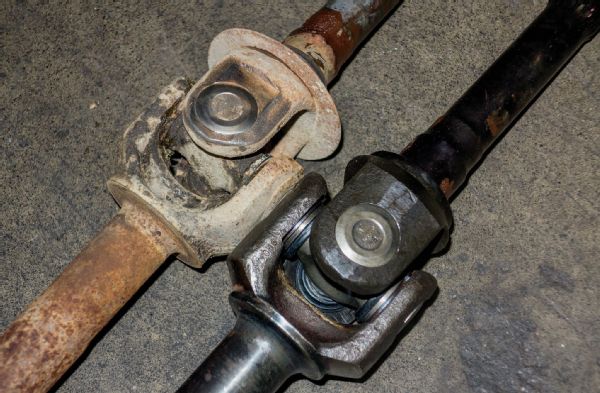
Note how much material is found around the ears of the new Revolution axleshafts (right). This prevents the ears from stretching or breaking when a U-joint fails. The Revolution axleshafts also accept full-circle snap rings, which prevent the U-joint caps from coming out of the ’shafts under excessive torque. In our experience, the caps popping off is the biggest cause of U-joint and axle failure.
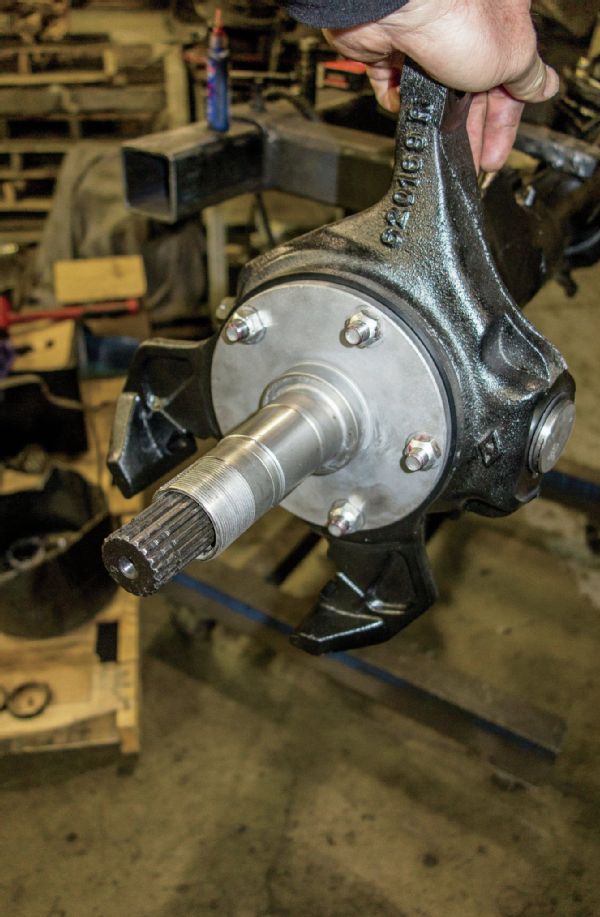
Different spindles were used over the years, including Chevy big bearing spindles, Chevy small bearing spindles, and Ford spindles. Parts can be mixed and matched to convert a Chevy Dana 44 to a 5-on-51⁄2-bolt pattern using Chevy small bearing spindles and Ford hubs and brakes.
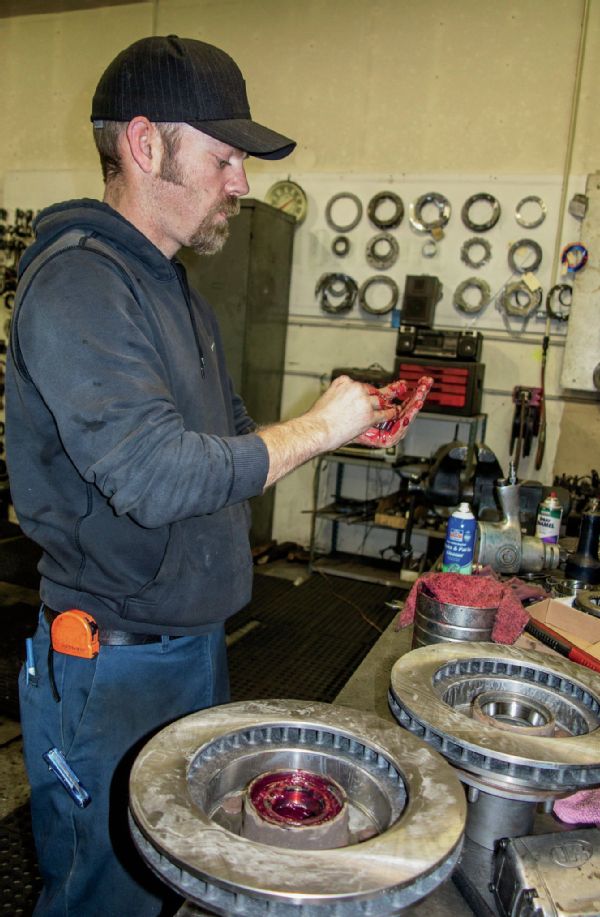
The advantage of a fixed spindle over a unitbearing is the ability to inspect, service, and change the bearings. When a unitbearing fails, you just change the entire assembly, which is easier and less messy than servicing bearings but more expensive. Lechner installed new Timken bearings in our axle, along with new brake rotors.
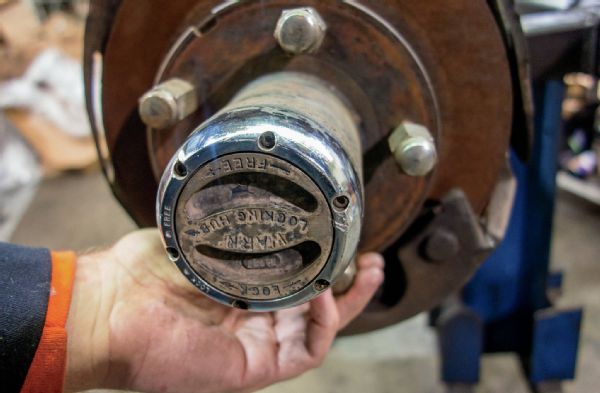
Our axle already had Warn Premium hubs on it, and we retained them. Locking hubs were only available from the factory with fixed spindles, not unitbearings. These hubs can commonly be found in wrecking yards for cheap and are still available new as well. They are interchangeable amongst Fords, Dodges, Chevys, fullsize Jeeps, and Internationals.
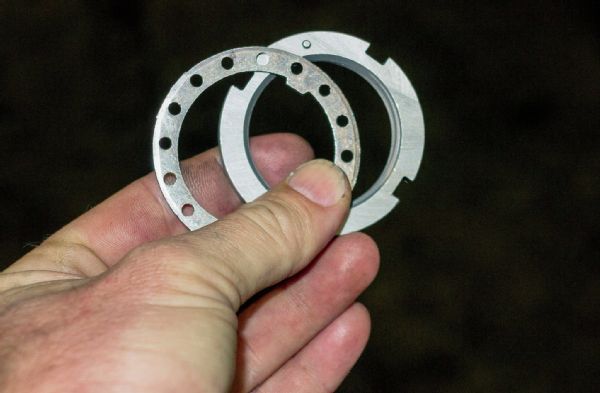
Bayshore Truck installed new Spicer hardware on our spindles. The inner nut sets the tension on the bearing, then the lock washer slides down the slot on the spindle, and a pin on the inner nut goes in a hole in the lock washer. The outer nut holds it all in place. Make certain to install the spindle nut with the pin first, with the pin facing outward.